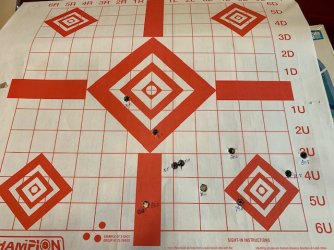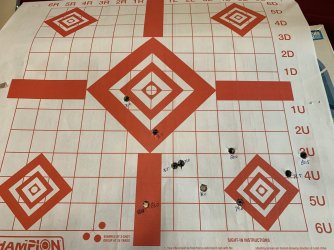RckyMtnRutt
Well-Known Member
So i just ran out today and did a 10 shot OCW at 300 yards. I know it isn't a ton of data to go off of but trying to find a load for my FIL's x-bolt 300wm. Conditions were pretty good 55 degrees maybe 4mph wind to the S/E. laying down in the bed with a really good rest so i feel like the gun put them where they were supposed to go.
180gr AB
Hornady brass (not my choice but what he had)
h-1000
fed 215m
77.5-78.5gr were both where i was aiming the whole time which makes me think that would be where the gun likes it (also almost same fps). I was aiming bullseye the whole time for all shots.
Velocities
76.5...2970.6
77......3008.9
77.5...3036
78.0...3038
78.5...3036.5
79.0...3108.6
79.5...3069.9
80.0...3126.7
80.5...3148.3
81.0...3140.1
180gr AB
Hornady brass (not my choice but what he had)
h-1000
fed 215m
77.5-78.5gr were both where i was aiming the whole time which makes me think that would be where the gun likes it (also almost same fps). I was aiming bullseye the whole time for all shots.
Velocities
76.5...2970.6
77......3008.9
77.5...3036
78.0...3038
78.5...3036.5
79.0...3108.6
79.5...3069.9
80.0...3126.7
80.5...3148.3
81.0...3140.1


